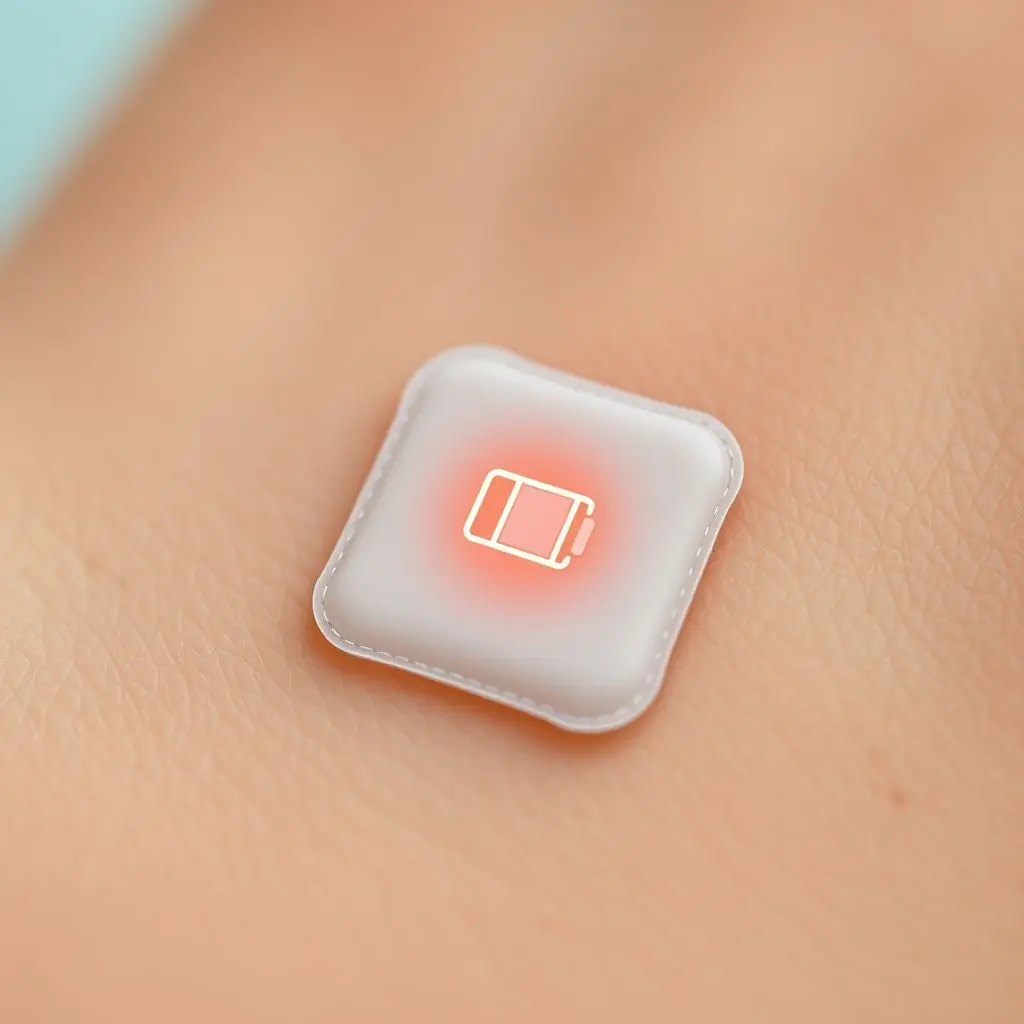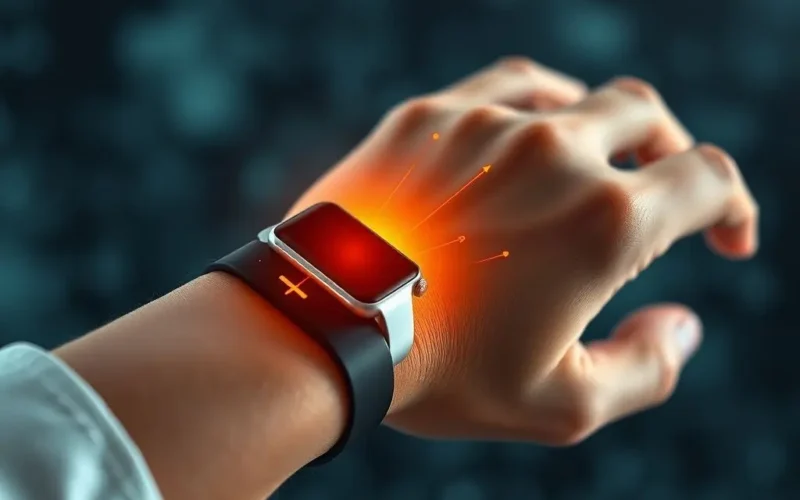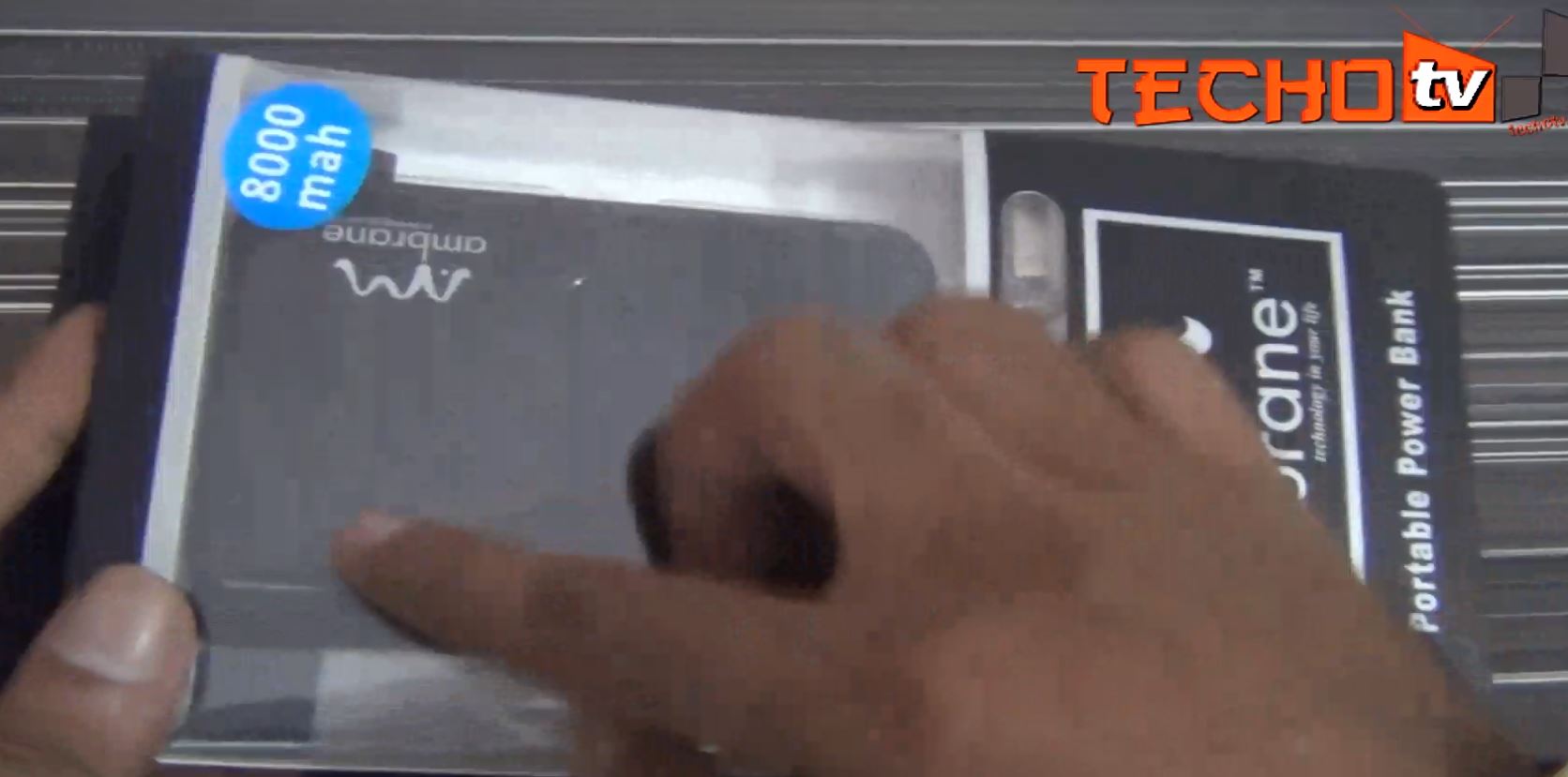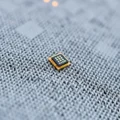Imagine this: your sleek smartwatch, that essential fitness band, your health monitor – none of them ever needing a charger again. Sounds like something plucked straight from a sci-fi flick, right? But hold onto your hats, because this isn’t just a wild dream. We’re on the cusp of a revolution in wearable technology, one where your very own body heat becomes the ultimate power source.
Think about it – ditching the tangled mess of charging cables, never scrambling for an outlet before a workout, or fretting if your essential health data tracker will die overnight. The possibility of devices that stay alive simply because you’re, well, alive and warm, is not only incredibly convenient but also signals a fundamental shift in how we power our personal tech.
Before we dive deep into the fascinating science behind this, here’s a quick peek at the concept in action:
Table of Contents
Unpacking the Magic: Thermoelectric Generators (TEGs)
So, how does your body’s warmth transform into usable electricity? The key players in this energy harvesting game are tiny but mighty components called Thermoelectric Generators, or TEGs for short. Despite the fancy name, the core principle is surprisingly simple, relying on a phenomenon known as the Seebeck effect.
The Seebeck Effect in a Nutshell
At its heart, the Seebeck effect describes how a temperature difference across a material can generate a voltage. Think of it like pushing electrons around using heat. When you have two different conducting or semiconducting materials joined together, and you heat one junction while keeping the other cool, a voltage is produced, driving an electric current.

A TEG device is essentially built from many pairs of these P-type and N-type semiconductor materials (which behave differently when exposed to heat) arranged in series to amplify the tiny voltage generated by each pair. One side of this arrangement is placed against a warmer surface (like your skin), and the other side is exposed to cooler ambient air. The temperature difference creates a flow of charge carriers within the semiconductor materials, resulting in a direct current (DC) voltage – exactly what your wearable device needs to charge its battery or power itself directly.
Turning Skin’s Warmth into Power: The Challenges
While the concept is straightforward, making it practical for a tiny device worn on your wrist presents significant challenges:
1. Low Power Output: The temperature difference between your skin (around 36-37°C) and the ambient air (say, 20-25°C) is relatively small compared to the temperature gradients used in industrial power generation. This means the voltage and current generated by a small TEG are also quite low, often in the microwatt or milliwatt range. Powering energy-hungry devices directly requires collecting and storing this small trickle of power.
2. Efficiency Matters: The efficiency of converting heat into electricity is crucial. Current commercial TEGs often have efficiencies below 10%. Researchers are constantly seeking materials and designs that can boost this conversion rate, especially for low-temperature differences.
3. Flexibility and Comfort: For a TEG to be integrated into a wearable, it needs to be thin, lightweight, and ideally flexible to conform to the body’s shape without causing discomfort or hindering movement. Traditional bulk thermoelectric materials are often rigid and brittle.
4. Cost and Scalability: Developing and manufacturing efficient, flexible TEGs using novel materials needs to be cost-effective for mass production.
The Material Science Breakthroughs

Addressing these challenges is where cutting-edge material science comes into play. Researchers are exploring various avenues:
- Flexible Inorganic Materials: Developing manufacturing techniques to make traditional high-performance thermoelectric materials like bismuth telluride alloys into thin, flexible films or nanowires.
- Conducting Polymers: Exploring organic materials that can conduct electricity and exhibit the Seebeck effect. While their efficiency might be lower than inorganic counterparts, they offer inherent flexibility and potentially lower processing costs.
- Hybrid Composites: Combining inorganic nanoparticles or nanowires with flexible polymer matrices to get the best of both worlds – improved thermoelectric performance with mechanical flexibility.
- Innovative Structures: Designing novel structures for TEGs, such as fabric-integrated modules or printable thermoelectric inks, to maximize contact area with the skin and enhance flexibility.
The goal is to create devices that are not only efficient at harvesting heat but also durable, biocompatible (safe for skin contact), and seamlessly integrated into fabrics or device straps.
Where Are We Now? And What’s Next?
Currently, body-heat-powered wearables are largely in the research and development phase. While some prototypes and proof-of-concept devices exist – labs have demonstrated wristbands or patches that can power low-energy sensors or trickle-charge a small battery using body heat – they aren’t yet generating enough power to constantly run a feature-rich smartwatch or brightly lit display.
However, the pace of development is accelerating. As materials improve and power management electronics become even more efficient, the dream of truly self-charging wearables is getting closer. The first wave of commercially viable products might not completely replace traditional charging, but rather use body heat harvesting to significantly extend battery life, reduce charging frequency, or power ultra-low-power sensors for continuous health monitoring.
Beyond the Wrist: More Potential Applications

The implications of body heat energy harvesting extend far beyond consumer gadgets:
- Medical Devices: Imagine health patches that monitor vital signs continuously without needing battery replacements, powered just by the wearer. This could revolutionize remote patient monitoring.
- Industrial Sensors: Wearable sensors for workers in hazardous environments could be self-powered, eliminating the risk and inconvenience of battery maintenance.
- Smart Clothing: Fabrics integrated with TEGs could power embedded electronics like sensors or dynamic displays.
- Military & First Responders: Self-powered communication or monitoring devices could be critical in situations where recharging is impossible.
Frequently Asked Questions About Body Heat Charging
Q: How much power can a body heat TEG generate?
A: The power output is typically quite low, usually ranging from a few microwatts to tens or hundreds of milliwatts, depending on the size of the TEG, the temperature difference, and the efficiency of the materials used. This is often enough to power very low-energy sensors or slowly charge a small battery.
Q: Will I feel the device getting hot or cold?
A: Ideally, no. A well-designed body heat TEG will efficiently transfer heat from your skin to the ambient air. While one side is warmer and the other cooler, the effect on your body temperature should be negligible and unnoticeable.
Q: Does it work when it’s very hot or very cold outside?
A: The performance depends on the temperature difference between your skin and the air. It will work best when there’s a significant difference (e.g., indoors or in moderate outdoor temperatures). In extreme heat where the ambient temperature is close to body temperature, or in very cold conditions where the TEG might be covered by clothing reducing the temperature gradient, the power output will be reduced.
Q: Is this technology safe to wear on the skin?
A: Yes, researchers are developing biocompatible materials and ensuring the devices are safe for prolonged skin contact. The technology itself involves generating a very low-level electrical current, far below anything that would pose a risk.
Q: When can I buy a smartwatch that never needs charging?
A: While prototypes exist, fully self-charging smartwatches with all current features are still likely some years away. We’ll probably see hybrid charging solutions or devices that use body heat harvesting to dramatically extend battery life much sooner.
(Disclaimer: Predicting specific release dates for emerging tech is difficult and depends on ongoing research and commercialization efforts.)
The Quiet Hum of a Personal Power Plant
Turning your own warmth into the energy needed to power the devices you wear is a concept that fundamentally shifts our relationship with personal electronics. It moves us closer to a future where devices are less reliant on external power grids and more seamlessly integrated with our bodies. As material science continues its relentless march forward, and power management becomes ever more sophisticated, the idea of you becoming a personal, portable power plant, quietly humming away to keep your tech alive, is becoming not just feasible, but an exciting reality on the horizon.





